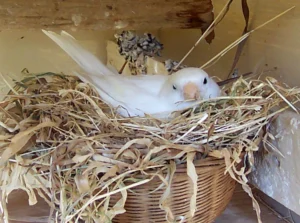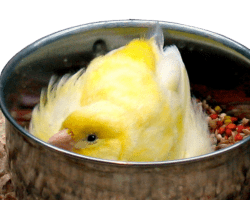Building the Perfect Canary Nest with Best Canary Nest Materials
Welcome to the world of canary nesting – a delightful endeavor where you get to create a cozy haven for your feathered friends! Whether you’re an experienced bird enthusiast or just starting out, building the perfect canary nest is essential for creating an environment that promotes avian bliss. But where do you begin? Don’t fret! In this blog post, we’ll guide you through the process of selecting and assembling the ideal nesting materials for your canaries. From soft and comfortable fibers to sturdy branches and twigs, we’ve got all the tips and tricks you need to ensure your little songbirds have the nest they truly deserve. So let’s dive in and discover what it takes to build the ultimate canary sanctuary!
The Basics: Canary Nest Materials
Canary nests are an essential part of creating a comfortable and safe environment for your beloved feathered friend. Whether you’re a seasoned canary owner or new to the world of avian care, understanding the basics of canary nests is crucial.
It’s important to know that canaries are cavity nesters. This means they prefer nesting in enclosed spaces rather than building elaborate structures like some other bird species. In the wild, canaries often choose tree cavities or crevices as their nesting sites.
| Nesting Materials | Description | Price | Buy |
|---|---|---|---|
 | Nesting Material Raffia Grass Canary Box Fillers Safe Decoration | View Now | |
 | Lot of 12pc Canary Finch Nesting Felt Pads,4.5inch by nesting pads | View Now | |
 | FOIBURELY 3 Sets Canary Nest Bird with Nesting Pads | View Now | |
 | YJJKJ Natural Mixing Nesting Material Pads for Bird Nest | View Now | |
 | Metal Finch Canary Bird Nests Lot of 5 | View Now | |
 | Mcage Bird Canary Finch Plastic Nests with Felt Pad-Lot of 4 | View Now |
When setting up a nest for your canary, you’ll need to provide them with suitable materials to build their cozy abode. Natural fibers such as coconut fiber, sisal rope, and soft grasses make excellent choices. These materials not only offer insulation but also mimic the natural environment where canaries would create their nests in the wild.
It’s worth noting that while providing nesting materials is necessary and beneficial for your canary’s well-being, it should be done with caution. Too much material may lead to overcrowding or entanglement hazards for your bird.
To find the perfect nest materials for your canary, consider visiting pet stores specializing in avian supplies or searching online retailers. Make sure to choose high-quality products that are free from toxins or pesticides which could harm your feathered friend.
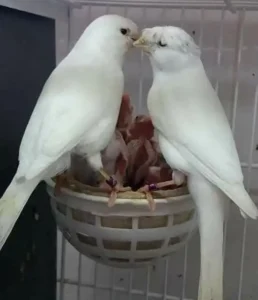
Position the completed nest somewhere secure within their enclosure where they feel safe and undisturbed—preferably in an area away from excessive noise and foot traffic.
By providing appropriate nesting materials and creating an inviting space within their cage or aviary, you’re ensuring optimal comfort and happiness for your cherished pet Canary.
The Best Canary Nest Materials
When it comes to creating the perfect nest for your canary, selecting the best canary nest materials is crucial. These feathered friends have specific preferences when it comes to their nesting environment, so providing them with the best materials will ensure their comfort and happiness.
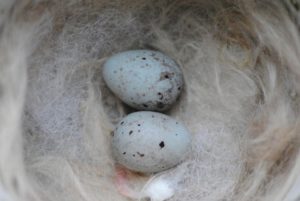
In addition to bedding material, it’s important to offer your canary access to natural fibers as one of the best canary nest materials. Pieces of coconut fiber or sisal rope make excellent additions to their nests, giving them something sturdy and flexible to work with while constructing their homes.
Another option worth considering is providing small twigs or branches that can be used as structural supports within the nest. This not only adds stability but also mimics the natural environment where these birds would build their nests in the wild.
Consider adding feathers or downy fluff from other birds’ feathers into your canary’s nest-making supplies. Not only does this give a touch of luxury and insulation but may also stimulate nesting behavior.
Remember, each bird has its own unique preferences when it comes to building its nest, so don’t be afraid to experiment with different materials until you find what works best for your feathered friend!
Where to Find the Perfect Canary Nest Materials
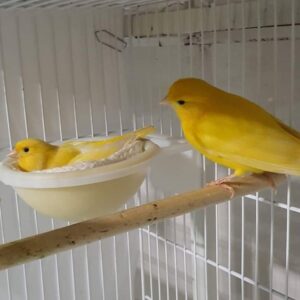
If you prefer a more convenient option, pet stores often carry a variety of nesting materials specifically designed for birds. These include soft cotton fibers and fluffy bedding that mimic the comfort of natural nests. You can also find pre-made bird nests made from safe and non-toxic materials.
Another great source for nesting material is online retailers specializing in bird supplies. They offer a wide range of options such as coconut fibers, moss, and even feathers that can be incorporated into your canary’s nest design.
Don’t forget about repurposing household items! Small strips of cloth or fleece make excellent nest lining while paper shreds from old magazines or newspapers work well as filler material.
Remember to always choose safe and non-toxic materials when selecting nesting supplies for your feathered friend. Happy hunting!
How to Put Your Canary’s Nest Together
Once you have gathered all the essential canary nest materials for your canary, it’s time to assemble their cozy nest. Putting together a canary nest is a simple and enjoyable task that will provide your feathered friend with a comfortable and secure space.
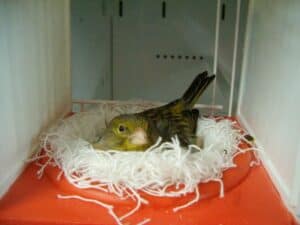
| Nesting Materials | Description | Price | Buy |
|---|---|---|---|
 | Nesting Material Raffia Grass Canary Box Fillers Safe Decoration | View Now | |
 | Lot of 12pc Canary Finch Nesting Felt Pads,4.5inch by nesting pads | View Now | |
 | FOIBURELY 3 Sets Canary Nest Bird with Nesting Pads | View Now | |
 | YJJKJ Natural Mixing Nesting Material Pads for Bird Nest | View Now | |
 | Metal Finch Canary Bird Nests Lot of 5 | View Now | |
 | Mcage Bird Canary Finch Plastic Nests with Felt Pad-Lot of 4 | View Now |
Next, line the bottom of the container with soft nesting material such as shredded paper or hay. This will provide a cushioning layer for the eggs and keep them warm during incubation.
Now, carefully arrange additional nesting materials inside the container. Canaries prefer fine substances like feathers, dried grasses, or even moss. These materials help create an inviting environment that mimics their natural habitat.
To add extra security to the nest, consider attaching some twigs or small branches around its edges. This not only provides structural support but also gives your canary something to perch on while in their nest.
Place the completed nest in a quiet corner of your bird’s cage where they feel safe and undisturbed. Ensure there is enough space around it so they have easy access when entering and exiting.
By following these steps, you’ll be able to create a perfect haven for your canary where they can rest and lay their precious eggs comfortably!
Conclusion
Building the perfect canary nest is an essential part of creating a comfortable and safe environment for your feathered friend. By providing the right materials, you can ensure that your canary has everything it needs to construct a cozy and secure nesting space.
Remember, when choosing nesting materials for your canary, opt for natural options such as coconut fiber, soft grasses, feathers, and even small twigs. These materials not only mimic their natural habitat but also provide comfort and insulation.
You don’t have to go far to find these materials. Many pet stores carry a variety of nesting supplies specifically designed for birds like canaries. Additionally, you may be able to gather some suitable items from nature itself – just make sure they are clean and free from any harmful substances or pests.
Once you’ve gathered all the necessary materials, assembling the nest is simple. Start by placing a layer of coconut fiber at the bottom of the cage or nest box. Then add in other materials like grasses and feathers in layers until the desired depth is achieved.
Keep in mind that every bird is unique, so take cues from your canary on how it prefers its nest arranged. Some might prefer more compact nests while others enjoy looser arrangements.
By providing the right nesting materials and setting up an inviting space for your canary to build its nest, you’re helping create an environment where it feels safe enough to reproduce naturally – bringing avian bliss into both yours and its life!
So why wait? Start gathering those best canary nest materials today and watch as your charming little companion creates its own piece of paradise within their cage or aviary! Happy building!
| Nesting Materials | Description | Price | Buy |
|---|---|---|---|
 | Nesting Material Raffia Grass Canary Box Fillers Safe Decoration | View Now | |
 | Lot of 12pc Canary Finch Nesting Felt Pads,4.5inch by nesting pads | View Now | |
 | FOIBURELY 3 Sets Canary Nest Bird with Nesting Pads | View Now | |
 | YJJKJ Natural Mixing Nesting Material Pads for Bird Nest | View Now | |
 | Metal Finch Canary Bird Nests Lot of 5 | View Now | |
 | Mcage Bird Canary Finch Plastic Nests with Felt Pad-Lot of 4 | View Now |


